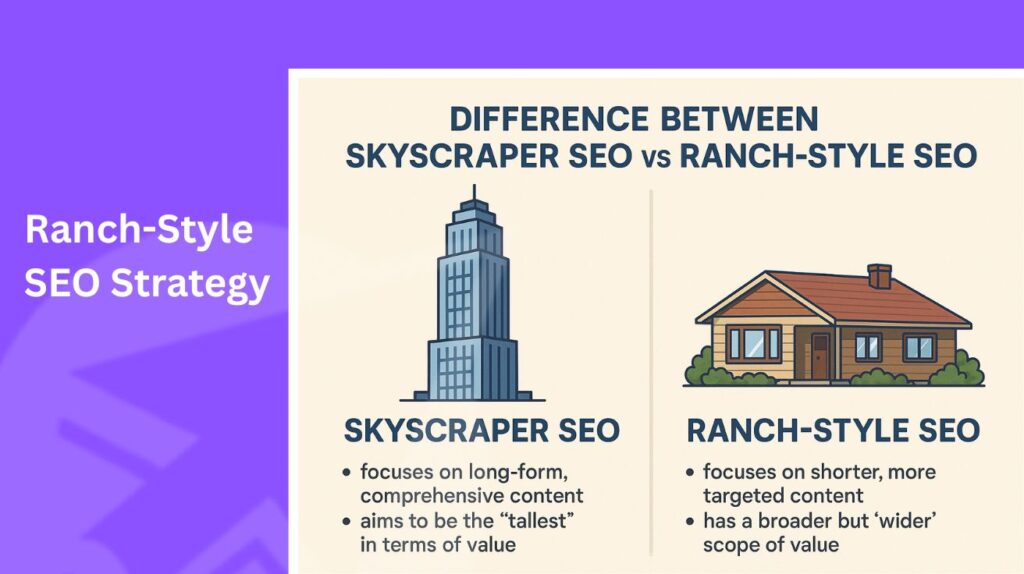You’re ranking on the first page of Google, but your traffic is disappearing. The numbers are dropping, and you can’t figure out why. The reason is a zero click search. It’s when a user finds their answer directly on the search results page in a featured snippet, a direct answer, or an AI summary and doesn’t click through to a single website.
This guide will help you understand this new SEO challenge and show you how to adapt your strategy to thrive in a zero-click world.
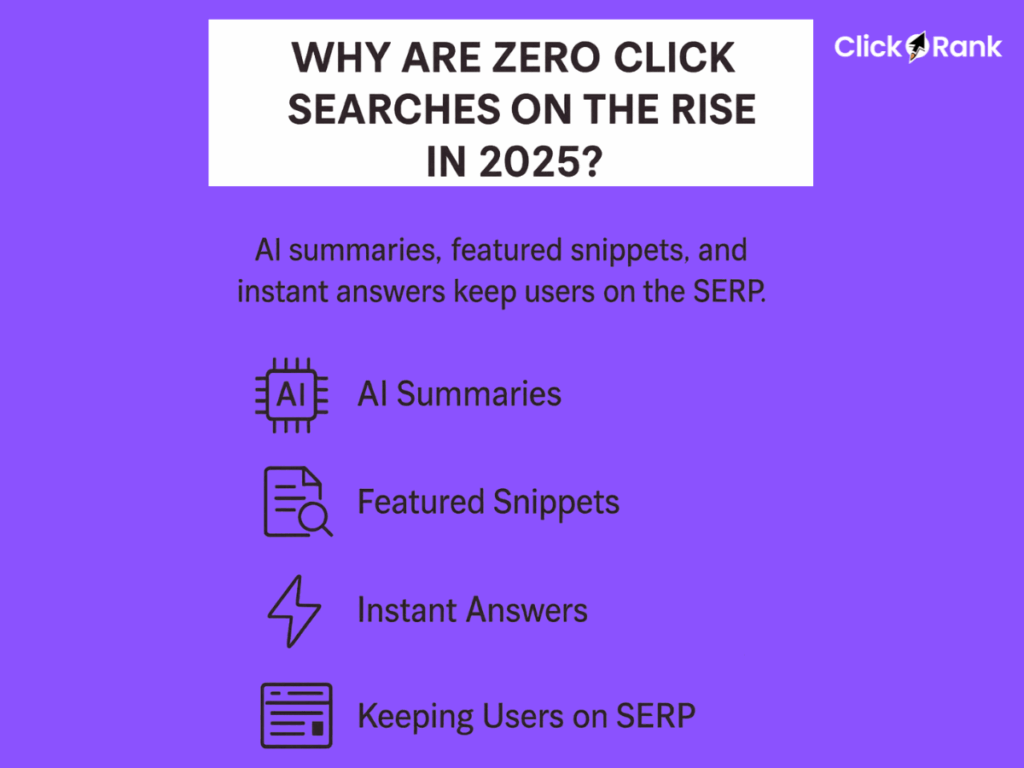
Why Are Zero Click Searches on the Rise in 2025?
The short and direct answer is that search engines are becoming more sophisticated at delivering information instantly. Features like Google’s Featured Snippets, Knowledge Panels, and “People Also Ask” boxes are designed to provide answers directly on the results page. This trend is further accelerated by the introduction of AI-powered summaries, such as Google’s generative AI overviews and Bing’s chat answers, which often provide comprehensive solutions, eliminating the need for a user to visit a website. The data shows that about 80% of consumers now rely on these zero-click results for a significant portion of their searches. This shift is driven by Google and Bing’s strategic goal of keeping users on the SERP by providing immediate, high-quality value.
The Challenge and Opportunity for Businesses and SEO Professionals
For content teams and SEO professionals, this zero-click landscape presents a clear challenge: a potential decrease in organic click-throughs and traffic. However, it’s a mistake to view this trend as entirely negative. Even without a click, your content can still provide significant value through increased brand exposure, building authority, and finding alternative ways to engage users directly on the results page. The key is to adapt your SEO strategy. Instead of solely focusing on earning clicks, your new goal should be to make your content thrive on the SERP itself, boosting your visibility and credibility.
This isn’t about giving up on traffic; it’s about redefining what a successful search result looks like. A successful result in the zero-click era is one that establishes your brand as an expert, earns a coveted SERP feature, and puts you in a position to win the click when a user’s intent is more complex. Below, we outline five practical and focused strategies to help you increase organic visibility and make the most of zero click searches in 2025.
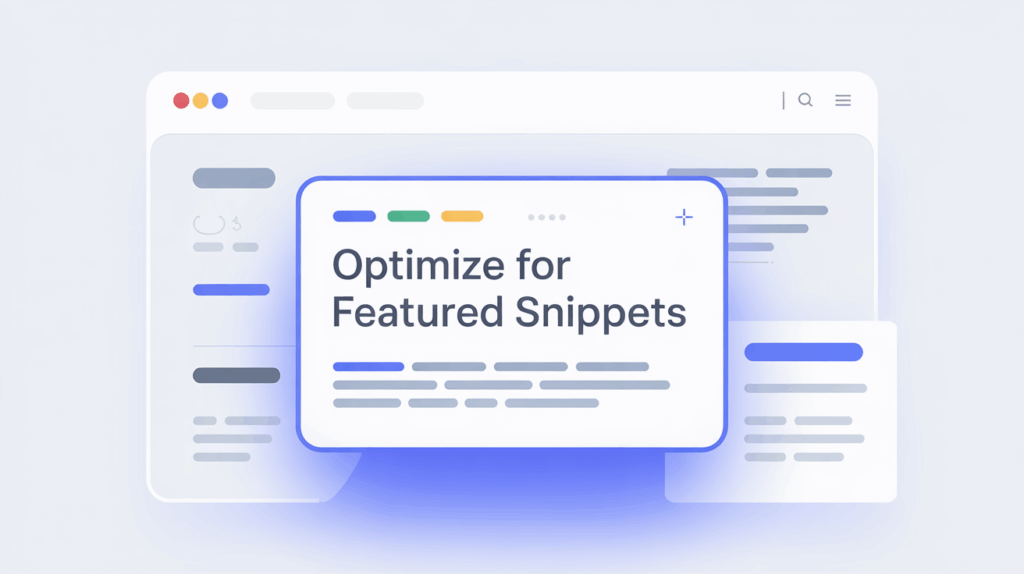
1. Optimize for Featured Snippets (Position Zero)
One of the most effective and high-impact ways to capture attention in a zero-click world is through featured snippet optimization. Featured snippets, often called “Position Zero,” are those answer boxes that appear at the very top of Google’s results, above all other organic listings. They display a concise chunk of content like a definition, list, table, or a series of steps that is directly extracted from a webpage to answer a user’s query. Securing a featured snippet means you have essentially won the top spot on the SERP, granting you unparalleled visibility.
How to Optimize for Featured Snippets:
To optimize your content for featured snippets, you must focus on clear, concise, and structured answers to common questions within your niche.
- Identify the right questions: Start by identifying the “burning questions” your audience is asking. Look for queries that start with “how to…”, “what is…”, “tips for…”, or “why…”. These are the types of questions that Google is most likely to answer with a featured snippet.
- Provide a direct answer: Place a direct and succinct answer in a short paragraph or an easy-to-scan list immediately after the question is posed in your content.
- Structure and formatting matter: Use proper heading tags (H2s, H3s) that clearly state the question. This helps Google’s algorithm easily identify and extract the relevant content for a snippet.
- Be concise: Google typically pulls snippet content that best answers a query in around 40-60 words. Get straight to the point and avoid adding fluff.
Key Takeaway: Even if the user doesn’t click on your link, securing a featured snippet puts your brand front-and-center. You are seen as an authority, delivering value upfront, which builds trust and recognition. In a zero click search scenario, this high-level attention is a significant win. When the user does have a more complex problem, or if the snippet only partially answers their question, your link is right there for them to click for more details.

2. Leverage “People Also Ask” (PAA) Opportunities
The “People Also Ask” (PAA) box is another valuable SERP feature you can capitalize on in a zero-click environment. These boxes appear for a huge number of queries in fact, over 51% of searches now show a PAA section. PAA boxes contain expandable questions related to the user’s original search. When a user clicks a question, it expands to reveal a brief answer (extracted from a webpage) and a link to the source. Often, users read the answer directly within the PAA box without clicking through a classic zero click search interaction.
How to Optimize for PAA:
Your goal is to become the trusted source for these answers. To do this, you need to create content that directly addresses these commonly asked questions in your domain.
- Incorporate Q&A style content on your site: Look at the PAA boxes for your target keywords and use those exact questions as headings.
- Provide a clear, direct answer: Place a concise answer right below the heading. If your content closely matches a popular PAA question, Google is more likely to feature it.
- Inform your content strategy: PAA research is a goldmine. These questions are Google’s way of telling you what else users want to know related to your topic. By covering these questions thoroughly, you not only increase your chances of appearing in PAA boxes but also make your content more comprehensive and useful.
Key Takeaway: Using a platform like ClickRank can significantly help identify which PAA questions are trending in your niche, suggesting high-value opportunities to integrate them into your content. This proactive approach positions your site as an answer hub on the SERPs, capturing users’ attention even when they don’t click through immediately.

3. Build Strong Brand Visibility and Authority on SERPs
In a world of zero click searches, brand visibility is your secret weapon. When users aren’t clicking as often, the impressions your brand makes directly on the search page become incredibly valuable. You want searchers to see your name, your URL, or your content and immediately recognize authority and trustworthiness. This way, even if they don’t visit your site right then and there, you’re planting seeds for future engagement.
How to Strengthen Brand Visibility on the SERP:
- Consistent, descriptive meta titles: Ensure your meta titles are under 60 characters and include your brand where appropriate. For example, “Zero Click Searches Explained ClickRank SEO Guide” both targets the keyword and displays your brand.
- Knowledge Panel & Google Business Profile: For companies, implementing organization schema and having an active Google Business Profile can increase the chances of Google showing a knowledge panel. This is prime real estate that showcases your brand info without a click needed.
- Favicons and Branding: Use a clear, recognizable logo for your site’s favicon. It’s a small touch, but it makes your listings stand out visually, reinforcing your brand at a glance.
- Focus on E-E-A-T: This stands for Experience, Expertise, Authority, and Trustworthiness. Google and other search engines are far more likely to feature content (including in zero-click answers and AI summaries) from sources they deem credible and authoritative. A 2025 study highlighted that sites not viewed as trusted, authoritative sources are unlikely to be featured in AI-generated responses. Conversely, brands demonstrating strong E-E-A-T have a much better chance.
Key Takeaway: This means consistently investing in high-quality, accurate content, earning credible backlinks, and showcasing author credentials or expert reviews to build demonstrable trust. Think of zero-click SERPs as the new billboards of the digital highway. Make sure every impression leaves a positive and authoritative mark.
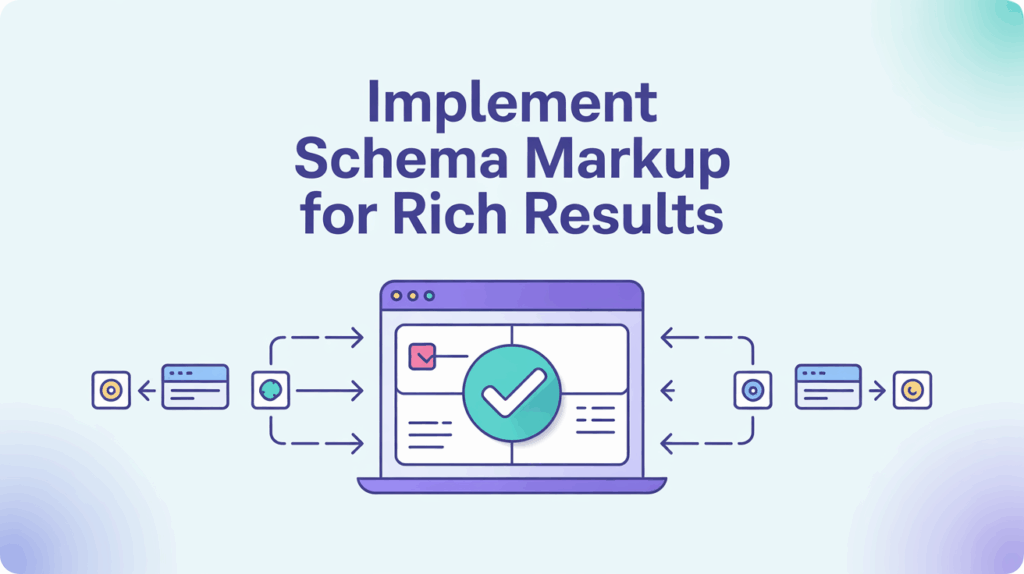
4. Implement Schema Markup for Rich Results
When Google displays those rich, eye-catching results (like star ratings, images, drop-down FAQs), you want your content to be featured. Schema markup (structured data) is a technical but powerful strategy to help you thrive, even without clicks. By adding schema code to your webpages, you make it easier for search engines to understand the context of your content and potentially feature it in enhanced ways on the Search Engine Results Page (SERP). This can lead to rich snippets that give users information directly on the results page which is exactly what a zero-click result is.
Useful Schema Types for Zero Click Search Visibility:
- FAQ Schema: If you have a Frequently Asked Questions (FAQ) section on a page, marking it up with FAQ structured data can make those questions and answers eligible to appear directly under your Google result. This often shows as a drop-down list with multiple Q&As from your site, visible without leaving the search page. You’re essentially providing mini-answers upfront, satisfying user curiosity and highlighting that your site has the information. Even without a click, they’ve engaged with your content. Many SEO professionals now strategically add an FAQ section at the end of important articles because it’s a win-win: it adds value for readers and creates an opportunity to grab more real estate on the SERP.
- HowTo Schema: If your content provides a step-by-step guide, using HowTo markup can allow Google to display it as a rich result with the steps clearly listed out. Someone looking for a quick overview might get exactly what they need directly from Google.
- Review Schema (Star Ratings): For product pages, recipes, or software reviews, using Review schema allows those golden stars (rating averages) to appear below your link in search results. This visual cue can instantly draw the eye. Even if a user doesn’t click immediately, seeing a high rating can leave a lasting positive impression of your product or service.
- Organization Schema: As touched on earlier, marking up your business details with Organization schema helps Google understand your entity and can contribute to generating a knowledge panel. While not guaranteed, it feeds Google the information it needs about your brand identity and authority.
Key Takeaway: Structured data doesn’t directly boost your organic rankings, but it significantly boosts your visibility. John Mueller from Google has emphasized this, stating that while “schema gives search engines more context about a page but doesn’t inherently increase its ranking,” it can “improve how search results are displayed,” potentially leading to better click-through rates and engagement when clicks do happen. In essence, schema is about standing out and owning more on-page real estate. In a zero-click world, standing out means being useful right on the SERP.
Implementing schema also offers a forward-looking benefit: it’s crucial for optimizing for voice search and AI. Voice assistants often rely heavily on structured data to find and read answers aloud. Google representatives have noted that “Structured data will become increasingly important for features like voice search and direct answers.”
By implementing schema now, you are future-proofing your content for how people will increasingly search without clicking or even typing. The good news is you don’t have to hand-code schema if it sounds intimidating. A platform like ClickRank offers automatic schema markup generation. This solution uses AI to analyze your content and create the appropriate structured data, ensuring you’re eligible for those valuable rich results without the headache of manual coding.
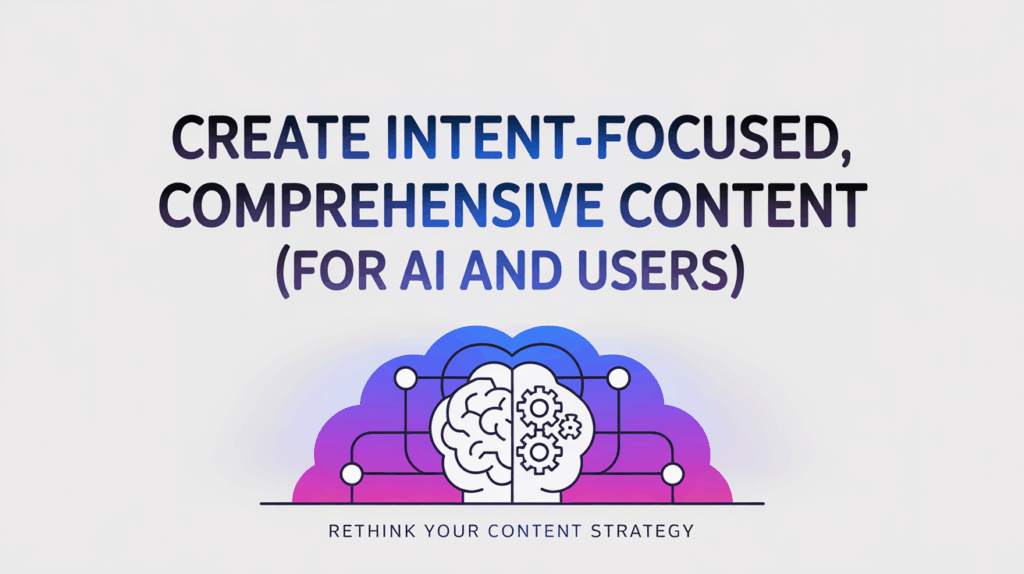
5. Create Intent-Focused, Comprehensive Content (for AI and Users)
Last but certainly not least, you need to rethink your content strategy with searcher intent and AI-driven results squarely in mind. In the past, SEO often involved creating a separate page for every minor keyword variation simply to grab clicks.
In the zero click search era, a better approach is to go deep and wide on topics. Create content that serves multiple related needs providing both the quick answer users might see on the SERP and the in-depth follow-up for those who want more. This way, you’re prepared whether the user stays on Google or clicks through to your site.
What Does Comprehensive Content Look Like?
Intent-focused, comprehensive content means that when you cover a topic, you aim to:
- Address the primary question the user likely has.
- Proactively answer the related questions they might think of next.
- Essentially, anticipate the “People Also Ask” questions within the content itself.
For example, if someone searches for “zero-click SEO strategies,” they might also wonder, “How do I measure success without clicks?” or “Does zero-click mean zero traffic potential?” A truly comprehensive piece (like this one) aims to answer those related queries in one place.
This approach improves your chances of capturing various SERP features (like Featured Snippets or PAA boxes) with a single, well-rounded article. It also keeps users who do click engaged longer because you’re answering their next question before they even need to search again.
Why Google and AI Favor Comprehensive Content:
From an SEO perspective, Google’s algorithms and AI summarizers love content that demonstrates it can fully satisfy the user’s intent. If your content serves as a one-stop resource for a topic, Google is more likely to feature parts of it. Consider Google’s generative AI results (the AI snapshots sometimes appearing at the top of search).
These often pull information from multiple sources to answer broader queries. They tend to favor content that is authoritative and covers the topic thoroughly. By aligning your content with the full user journey and intent behind a query, you increase the chances of being one of the trusted sources the AI overview features.
As one industry expert stated, “If you want your brand to show up in these AI-generated summaries, you need to create content that aligns with the full intent behind the query, not just individual keywords.”
How to Create Comprehensive Content:
To implement this strategy:
- Start with keyword research, but go beyond individual keywords think broader topics and themes.
- Use tools to discover related queries and semantic variations.
- Check the PAA questions that appear for your target topics.
- Explore forums or communities (like Reddit, Quora) to see what real users are asking about the subject.
- Once you understand the full scope of the topic, create high-quality content that addresses the identified questions and sub-topics.
- Crucially, structure your content well. Include clear sections with descriptive headings (H2s, H3s) so Google can easily understand the structure and extract the specific Q&A or snippet it needs for SERP features.
- Don’t shy away from updating your existing content. If new questions emerge or the landscape changes, edit your content to reflect those updates. Fresh, relevant, and accurate content stands a much better chance of being featured and trusted.
Key Takeaway: Remember, zero click search doesn’t mean zero engagement. It simply means the initial engagement might happen directly on the SERP instead of on your website. If you provide a valuable answer directly in search results, you’ve successfully captured that user’s attention and met their immediate need. The next step is ensuring that when they do have a deeper need or are ready for a product or service your site is the obvious, trusted place to go.
Thrive in the Zero Click Search Era with ClickRank.ai
Zero click searches are changing the SEO game, but with the right strategies, you can absolutely thrive. By focusing on:
- Optimizing for featured snippets
- Answering “People Also Ask” questions
- Building your brand’s authority (E-E-A-T)
- Adding schema markup
- Creating comprehensive, intent-rich content
…you’ll not only capture those valuable on-SERP interactions but also set yourself up to gain the clicks that truly matter. It’s about working smarter and recognizing organic visibility as the new currency, not solely focusing on clicks.
Streamlining Your Zero Click Search Strategy with ClickRank
Implementing all of these tactics effectively can be a lot to manage, especially at scale. This is where a solution like ClickRank comes in handy. ClickRank is an AI-powered SEO platform specifically designed to help you optimize your content and technical SEO for today’s search landscape. For example, ClickRank can:
- Automatically suggest improvements for featured snippet targeting
- Generate FAQ schema for your pages with ease
- Help you bulk-optimize your meta tags to be more compelling on the SERP
We automate the hardest part of SEO, audits and optimization, so you can focus on what actually drives growth: content, strategy, and visibility
Ready to Boost Your Visibility?
Ready to improve your organic visibility in a zero click search world? Try ClickRank.ai to streamline your zero-click SEO strategy. With data-driven insights pulled directly from sources like Google Search Console and efficient one-click optimizations, our platform helps you stay ahead of constant search engine changes and keep your brand firmly in the spotlight.
Run a free audit today and let our solution help you turn those no-click searches into valuable brand impressions and real growth opportunities.


